Koyo N-FLO (dual pass) radiator question
#1
Koyo N-FLO (dual pass) radiator question
I'm about to buy a new radiator for my car. I've decided to go for Koyo but can't decide between single and dual pass (n-flo). I've searched in the forum but haven't come across a satisfactory answer. I'm also little confused about the purpose of dual pass (high speed or stop and go).
In summers Istanbul gets quite hot (86-104f) and being an overpopulated city you often get stuck in stop and go traffic for very long periods in other words no air flow to the radiator and sauna air when the car starts moving.
----------------------------------------------
This article is from Import Tuner:
Single-Pass Vs. Dual Pass Radiators
There's been much debate into the theories and logic behind dual-pass/double-pass radiators and their benefits over the more commonly used single-pass system. The Koyo dual-pass radiator (pictured) uses their N-FLO technology that welds two partitions half-way through the radiator core, thus splitting the tank into separate chambers. The "N"-shaped water flow pattern is designed to improve radiator efficiency by passing the fluid over the first half of the radiator and then the second half, allowing the core to dissipate heat twice, while maintaining the coolant in the radiator up to three times longer, offering improved cooling. Koyo representative Scott Oshiro explains, "Dual-pass radiators like the N-FLO were designed specifically for known applications where cooling was an issue, such as with drift cars." In cars being pitched sideways down a track, using a dual-pass radiator allows the radiator to cool efficiently, even when ambient air isn't being forced directly into it at all times. Unless a car suffers from previous overheating issues, all three radiator manufactures we contacted recommended using the traditional down-flow or cross-flow single-pass radiator, which presents all the tubes with the highest possible water temperature at once. Dual-pass radiators work efficiently at high speeds in certain race-prepped systems, but do so at a cost of increased load on an engine's water pump, and inefficient low-speed cooling capacity, which can raise pressure and temperature to higher-than-desired levels.
And this is from Koyo website:
When factory equipped radiators have inlet and outlet locations that allow proper placement, Koyorad carefully welds aluminum partitions in the upper and lower tanks of the radiator. This is Koyorad’s N-Flo Technology which allows for a double or triple pass radiator. This design cools more efficiently by allowing the coolant to remain in the radiator for a longer period of time therefore transfering more heat to the surrounding air. N-Flo Technology is available on cars that are known to have limited airflow to the radiator.
----------------------------------------------
What I get from these articles is that N-flo if your car is moving but not enough air is hitting the radiator (iow FMIC) and good old single pass radiator in all other situations incl. stop and go traffic even though no air is hitting the radiator there either The Import Tuner article makes it sound like it's useful for drift cars only.
The Import Tuner article makes it sound like it's useful for drift cars only.
As you see I'm a little confused so which one do you think would is better for my application? Or am I splitting hairs here?
In summers Istanbul gets quite hot (86-104f) and being an overpopulated city you often get stuck in stop and go traffic for very long periods in other words no air flow to the radiator and sauna air when the car starts moving.
----------------------------------------------
This article is from Import Tuner:
Single-Pass Vs. Dual Pass Radiators
There's been much debate into the theories and logic behind dual-pass/double-pass radiators and their benefits over the more commonly used single-pass system. The Koyo dual-pass radiator (pictured) uses their N-FLO technology that welds two partitions half-way through the radiator core, thus splitting the tank into separate chambers. The "N"-shaped water flow pattern is designed to improve radiator efficiency by passing the fluid over the first half of the radiator and then the second half, allowing the core to dissipate heat twice, while maintaining the coolant in the radiator up to three times longer, offering improved cooling. Koyo representative Scott Oshiro explains, "Dual-pass radiators like the N-FLO were designed specifically for known applications where cooling was an issue, such as with drift cars." In cars being pitched sideways down a track, using a dual-pass radiator allows the radiator to cool efficiently, even when ambient air isn't being forced directly into it at all times. Unless a car suffers from previous overheating issues, all three radiator manufactures we contacted recommended using the traditional down-flow or cross-flow single-pass radiator, which presents all the tubes with the highest possible water temperature at once. Dual-pass radiators work efficiently at high speeds in certain race-prepped systems, but do so at a cost of increased load on an engine's water pump, and inefficient low-speed cooling capacity, which can raise pressure and temperature to higher-than-desired levels.
And this is from Koyo website:
When factory equipped radiators have inlet and outlet locations that allow proper placement, Koyorad carefully welds aluminum partitions in the upper and lower tanks of the radiator. This is Koyorad’s N-Flo Technology which allows for a double or triple pass radiator. This design cools more efficiently by allowing the coolant to remain in the radiator for a longer period of time therefore transfering more heat to the surrounding air. N-Flo Technology is available on cars that are known to have limited airflow to the radiator.
----------------------------------------------
What I get from these articles is that N-flo if your car is moving but not enough air is hitting the radiator (iow FMIC) and good old single pass radiator in all other situations incl. stop and go traffic even though no air is hitting the radiator there either
 The Import Tuner article makes it sound like it's useful for drift cars only.
The Import Tuner article makes it sound like it's useful for drift cars only. As you see I'm a little confused so which one do you think would is better for my application? Or am I splitting hairs here?
#2
The N-flow keeps the coolant in the radiator longer allowing for additional cooling. It is only $25.00 more than the regular Koyo, which is also a great radiator. Either one is a huge upgrade over stock.
http://banzai-racing.com/store/93+_rx-7_radiator.html
http://banzai-racing.com/store/93+_rx-7_radiator.html
#3
always modding
Join Date: Mar 2005
Location: on a tiny island in the middle of a sea
Posts: 1,667
Likes: 0
Received 3 Likes
on
3 Posts
strange.. seems almost contradictory..
import tuner makes it sound like a bad idea for have double pass on a street car (stress to the FD's already poor waterpump and not good if it doesn't have alot of air passing over it)
but koyo makes it sound like it's the opposite..
import tuner makes it sound like a bad idea for have double pass on a street car (stress to the FD's already poor waterpump and not good if it doesn't have alot of air passing over it)
but koyo makes it sound like it's the opposite..
#4
strange.. seems almost contradictory..
import tuner makes it sound like a bad idea for have double pass on a street car (stress to the FD's already poor waterpump and not good if it doesn't have alot of air passing over it)
but koyo makes it sound like it's the opposite..
import tuner makes it sound like a bad idea for have double pass on a street car (stress to the FD's already poor waterpump and not good if it doesn't have alot of air passing over it)
but koyo makes it sound like it's the opposite..

$25 price difference is not important and yes they'll both be better then the stock radiator but out of the two only one can be better so I'm trying to figure out which one has the edge.
#5
Original Gangster/Rotary!

iTrader: (213)
I'll tell you what I do know--- Fluidynes drop right in and perform very well, even on 400 rwhp road race applications. Nothing wrong with Koyos, but I prefer the Fluidyne due to ease of install and my familiarity with them. The unit on my personal car has been truckin' since 2001 

#6
I'll tell you what I do know--- Fluidynes drop right in and perform very well, even on 400 rwhp road race applications. Nothing wrong with Koyos, but I prefer the Fluidyne due to ease of install and my familiarity with them. The unit on my personal car has been truckin' since 2001 

---------------------
Some people claim up to 10 degree decrease in temps after switching to N-Flo (i think from standard Koyo). How's that possible?
Maybe I should go with single pass version since other companies like Fluidyne haven't released products like N-FLO

#7
I am not a fan of Fluidyne at all. Thinner than Koyo, terrible drain design, built in brackets, the list goes on...
On ever side-by-side comparison I have done, even the regular Koyo performs better.
I hear about people with Koyo fitment issues, however, I have yet to see one first hand. We install a Koyo with nearly every engine install we do. In stock and modified car all fit fine.
On ever side-by-side comparison I have done, even the regular Koyo performs better.
I hear about people with Koyo fitment issues, however, I have yet to see one first hand. We install a Koyo with nearly every engine install we do. In stock and modified car all fit fine.
Last edited by Banzai-Racing; 03-24-10 at 12:46 PM.
Trending Topics
#8
I'll tell you what I do know--- Fluidynes drop right in and perform very well, even on 400 rwhp road race applications. Nothing wrong with Koyos, but I prefer the Fluidyne due to ease of install and my familiarity with them. The unit on my personal car has been truckin' since 2001 

Yes, I've searched in the forum and although there are minor complaints about Fluidyne fitment most seem to happy with them and if fitment is the priority Fluidyne is the way to go but I'm buying a whole bunch of parts in one go like intercooler, silicone hoses, radiator etc. so I decided to go with Koyo as there is approx $150-200 difference in price for something that does the same job.
---------------------
Some people claim up to 10 degree decrease in temps after switching to N-Flo (i think from standard Koyo). How's that possible?
Maybe I should go with single pass version since other companies like Fluidyne haven't released products like N-FLO
---------------------
Some people claim up to 10 degree decrease in temps after switching to N-Flo (i think from standard Koyo). How's that possible?
Maybe I should go with single pass version since other companies like Fluidyne haven't released products like N-FLO

There is nothing magical about N-flow; it may produce some benefit compared to a single pass if there is a severe coolant and/or airflow distribution problem affecting said radiator. The technical argument is fast, turbulent coolant flow (i.e., N-flow) vs slower flow for a full parallel flow configuration. (There is a time constant associated with heat transfer and it is well known in engineering circles that you can reduce heat rejection efficiency in a heat exchanger by circulating coolant too fast or too slow.) I think that a 2:1 ratio of length vs width is about right for the general automotive application with the radiators and coolant flows of the magnitude we are working with. This is my own conclusion, based on my calculations and experience designing heat exchangers. Apparently the automotive industry has reached a similar conclusion, hence the proliferation of the cross-flow radiator. In practical application, I think that anything 1:2 (length vs width) parallel flow to 2:1 (cross-flow) is well suited to our application.
Either Koyo is really overkill. With adequate airflow (the usual limiting factor) it is capable of rejecting enough heat to support 600+ continuous hp.
#9
Original Gangster/Rotary!

iTrader: (213)
I am not a fan of Fluidyne at all. Thinner than Koyo, terrible drain design, built in brackets, the list goes on...
On ever side-by-side comparison I have done, even the regular Koyo performs better.
I hear about people with Koyo fitment issues, however, I have yet to see one first hand. We install a Koyo with nearly every engine install we do. In stock and modified car all fit fine.
On ever side-by-side comparison I have done, even the regular Koyo performs better.
I hear about people with Koyo fitment issues, however, I have yet to see one first hand. We install a Koyo with nearly every engine install we do. In stock and modified car all fit fine.
I do know on my setup due to the Blitz FMIC, stock rad fans and stock R1 oil cooler lines I have zero room for a thicker rad even if I wanted one.
#10
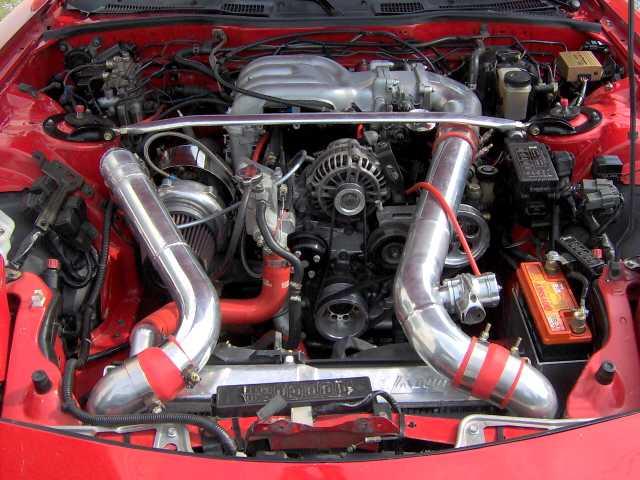
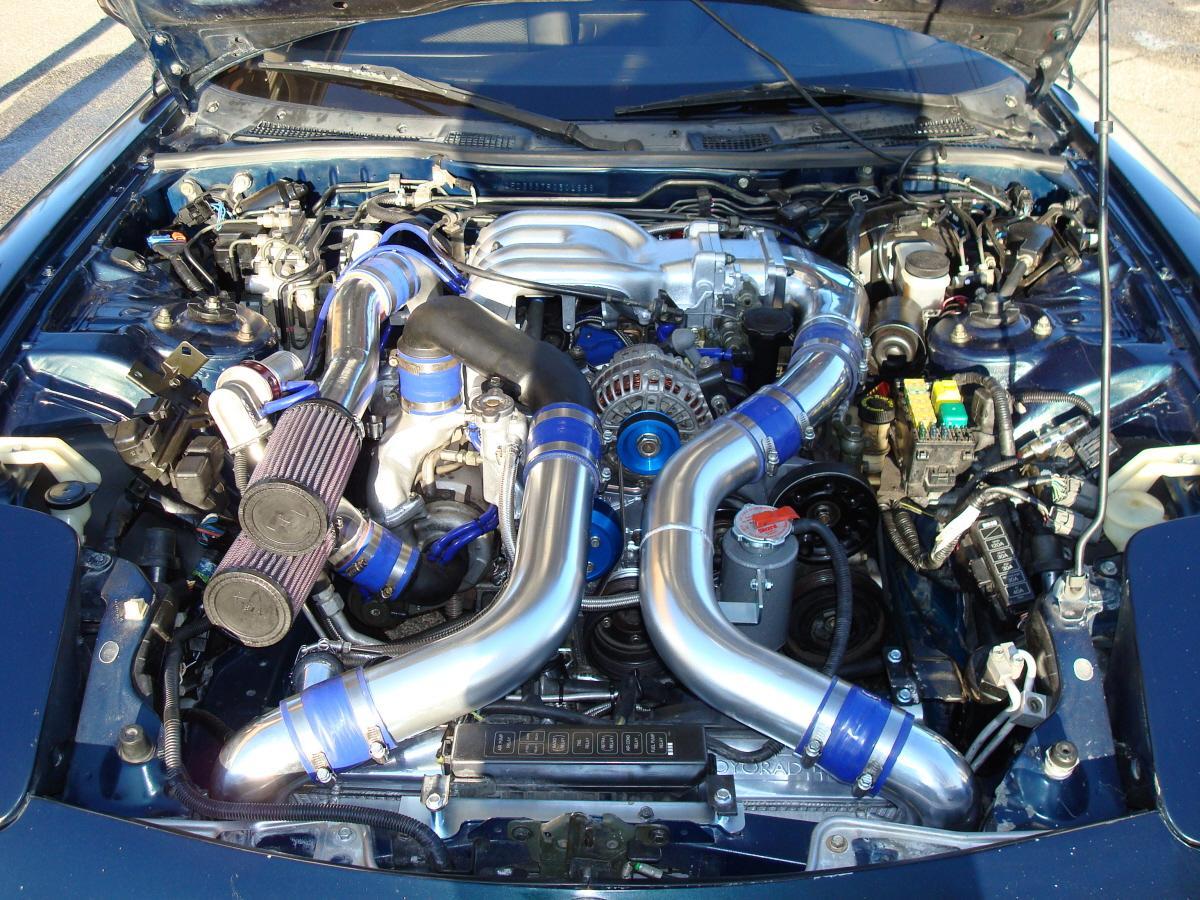
My own personal car before I installed the 20B....
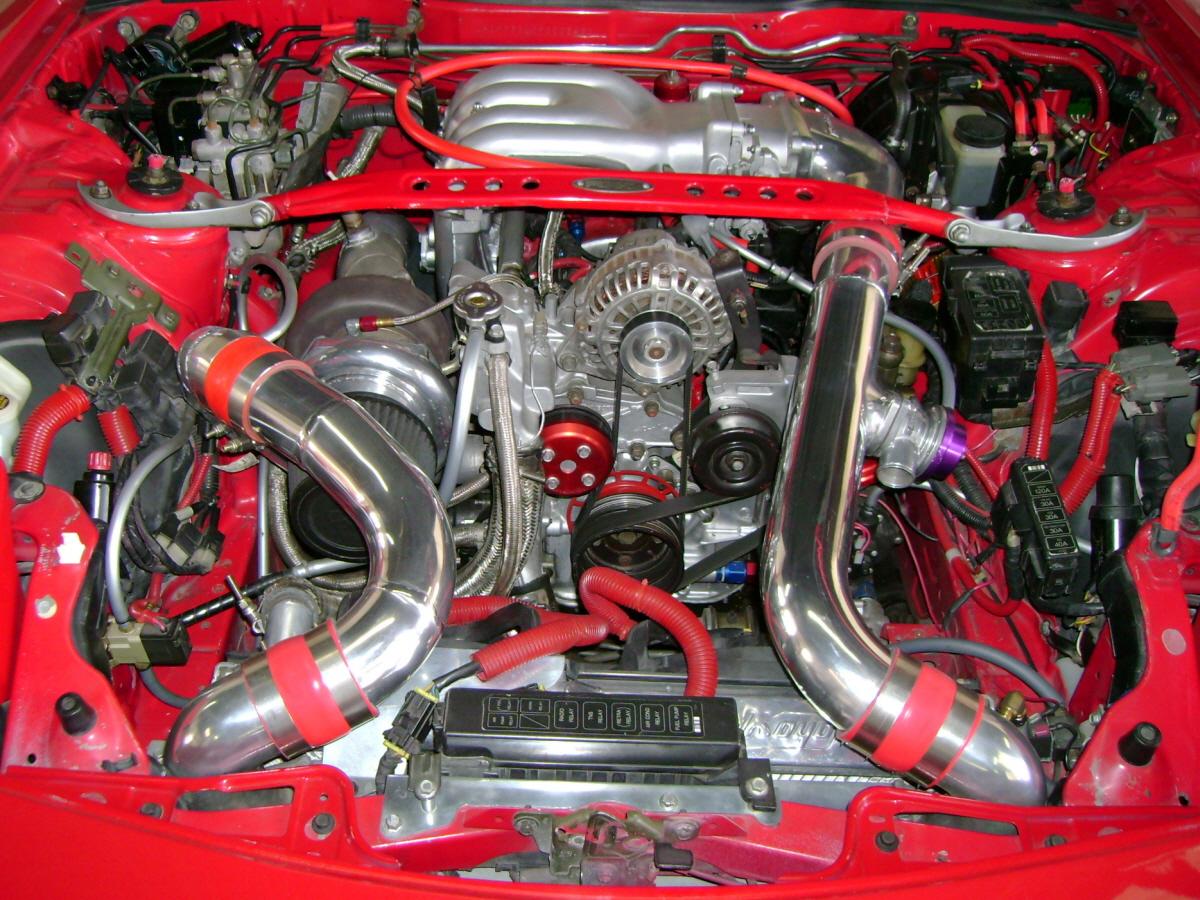
No fitment issues.
Last edited by Banzai-Racing; 03-24-10 at 03:09 PM.
#11
Original Gangster/Rotary!

iTrader: (213)
Like I said before Chris, my FD has never had cooling issues---on the drag strip, road course, tail of the Dragon. I'm talking temps in the 80s and 90s C.
Did any of the cars above have R1 oil coolers and oem lines? Maybe the difference is in the way the Koyos are mounted.
I'm not bashing the Koyos, but there's certainly more than one way to skin a cat. It's good to have options, right ?
?
Did any of the cars above have R1 oil coolers and oem lines? Maybe the difference is in the way the Koyos are mounted.
I'm not bashing the Koyos, but there's certainly more than one way to skin a cat. It's good to have options, right
 ?
?
#12
Like I said before Chris, my FD has never had cooling issues---on the drag strip, road course, tail of the Dragon. I'm talking temps in the 80s and 90s C.
Did any of the cars above have R1 oil coolers and oem lines? Maybe the difference is in the way the Koyos are mounted.
I'm not bashing the Koyos, but there's certainly more than one way to skin a cat. It's good to have options, right ?
?
Did any of the cars above have R1 oil coolers and oem lines? Maybe the difference is in the way the Koyos are mounted.
I'm not bashing the Koyos, but there's certainly more than one way to skin a cat. It's good to have options, right
 ?
?Banzai: Since you have a lot of experience with Koyo can you tell me if I will have any fitment issues in my car. I have dual oil coolers and stock battery (actually a touch bigger then stock but fits in the stock battery tray). I am also going to buy an aftermarket SMIC, probably something like greddy smic or ebay smic for the time being.
--------------------------------------
Guys let's not mix apples and oranges. From what I understand Fluidyne has better fitment which doesn't mean it's a better product and from all the pics I saw Koyo looks like it has better quality and finish as a product and also looks like Koyo is a much bigger company but we all agree anything is better then stock so let's try to find out if single pass or dual pass radiator is better for a volcano called RX7.
#13
The one
iTrader: (5)
I can tell you that if you are running stock intercooler and intake you will have install issues with the Koyo. Fluidyne is a lot better fit on a stock setup. If you arent stock then Koyo is fine and no need for the dual pass.
I have a sale on Koyos if interested. $275 for the regular.
Also, even if a Koyo runs a few degrees cooler than a fluidyne it doesnt really matter as neither of them are going to cause an overheat situation.
I have a sale on Koyos if interested. $275 for the regular.
Also, even if a Koyo runs a few degrees cooler than a fluidyne it doesnt really matter as neither of them are going to cause an overheat situation.
#14
I see absolutely no benefit to Fluidyne.
1. It cost a lot more than Koyo
2. Quality is not up to that of the Koyo
3. The petcock drain system lasts about two times before needing replacement
4. Considerably thinner and less efficient than Koyo
5. Integrated mounting brackets look cheap when stood up for FMIC
The only thing it has going for it, is that people that do not know how to properly install a Koyo in the stock position, find it easier. This is directly related to the fact that it is thinner.
We install the Koyo in stock cars all the time, not fitment issues at all. Here are dozens of galleries of builds that we have done. http://www.banzai-racing.com/fd_gallery.htm
Banzai: Since you have a lot of experience with Koyo can you tell me if I will have any fitment issues in my car. I have dual oil coolers and stock battery (actually a touch bigger then stock but fits in the stock battery tray). I am also going to buy an aftermarket SMIC, probably something like greddy smic or ebay smic for the time being.
Greddy SMIC, Koyo, stock battery (full build http://www.banzai-racing.com/gaglio_page5.htm )
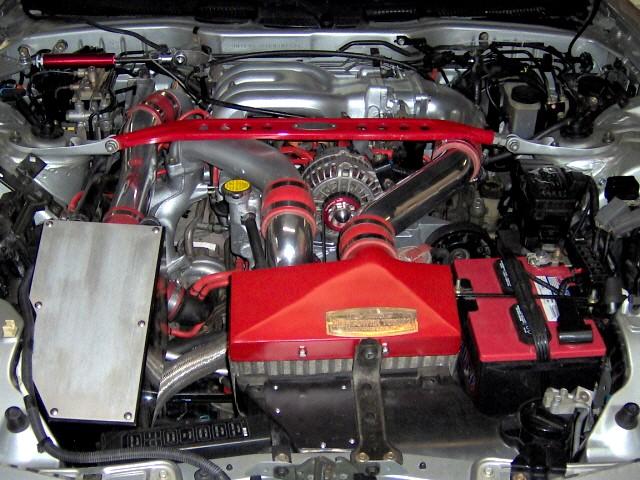
R1, PFS SMIC, Koyo, stock battery, (full build http://www.banzai-racing.com/nelson_installation.htm )

Another PFS SMIC, Koyo, stock battery ( mods http://www.banzai-racing.com/2009_cu...terson_smp.htm )
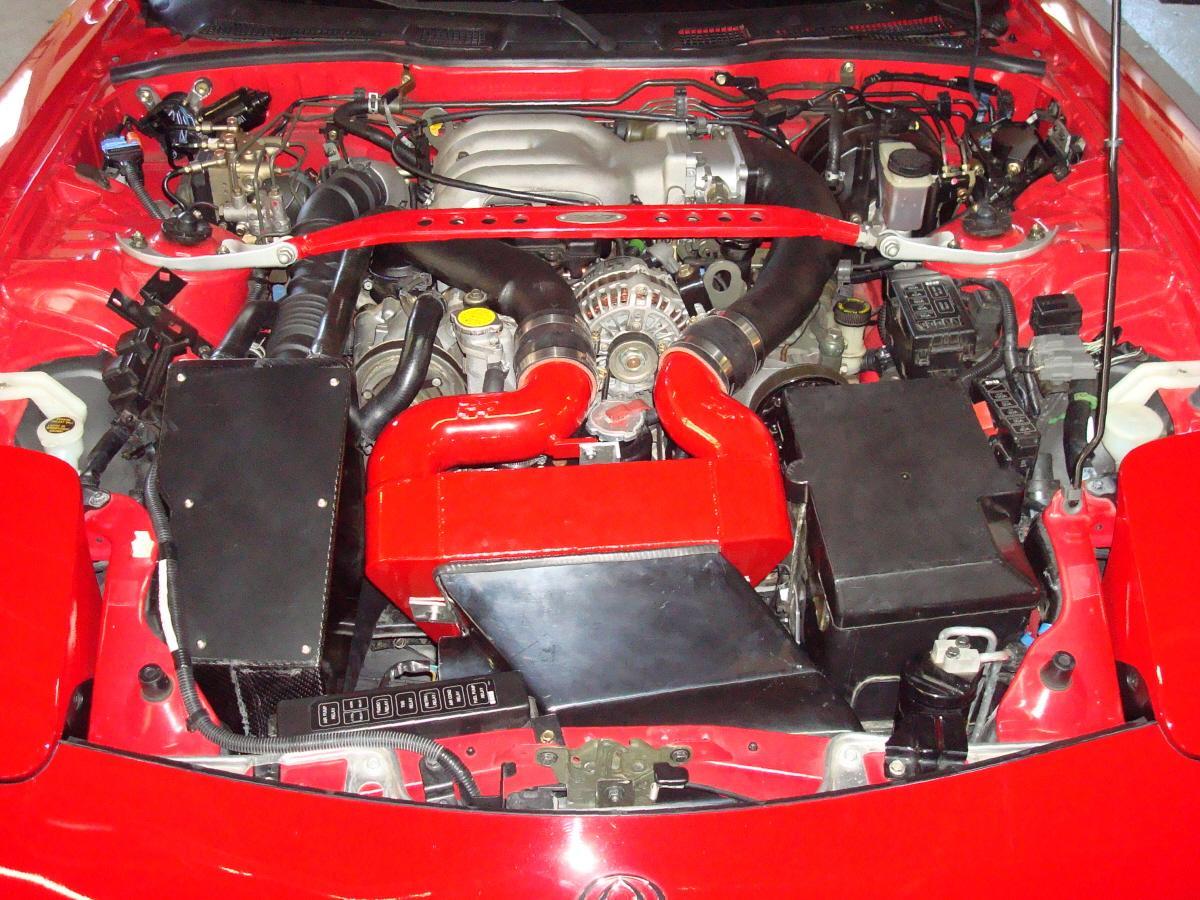
Last edited by Banzai-Racing; 03-24-10 at 06:59 PM.
#15
Additionally I use a modified Koyo N-Flow in my personal car
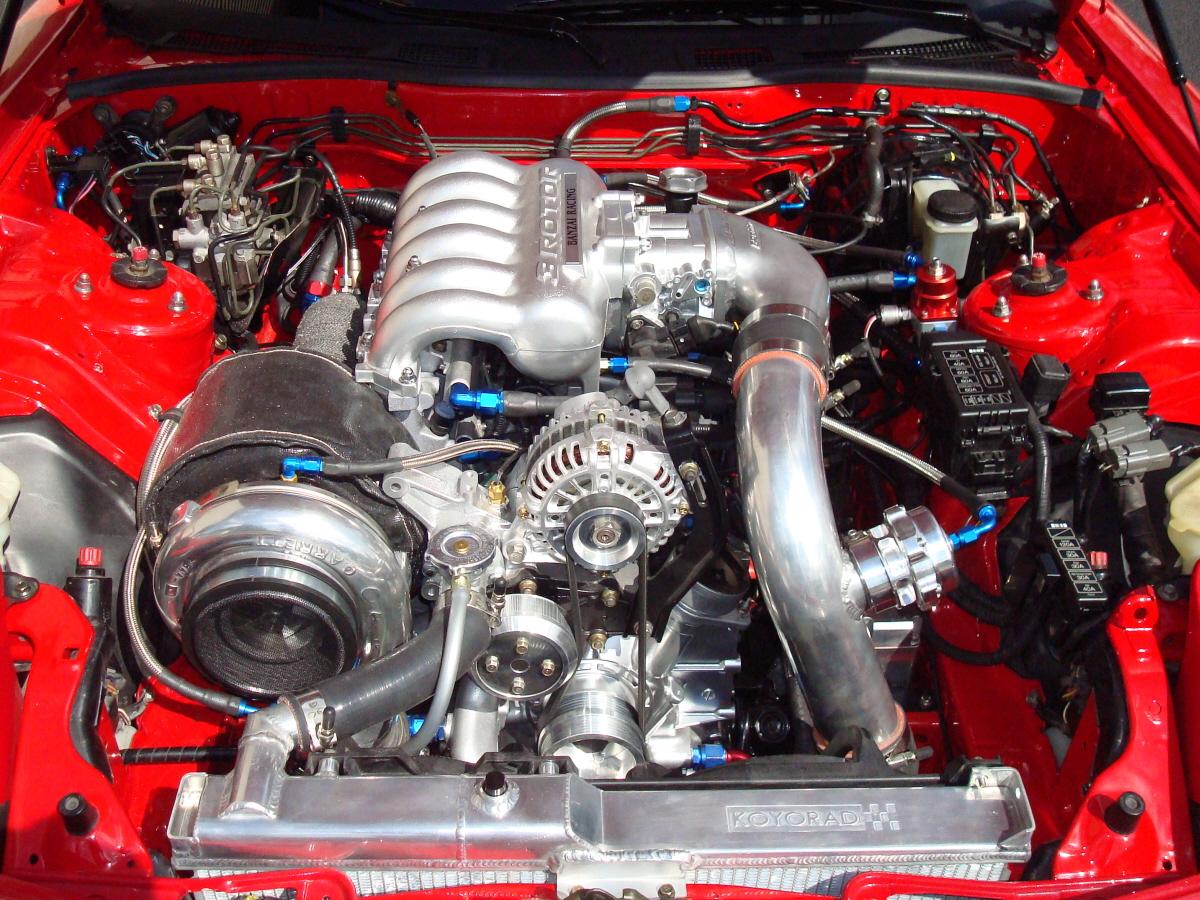
We have performed before and after testing on one of our customer's track only cars that used to suffer from constant high temps. Installed the N-flow every cooling problem it had disappeared instantly. This car spends nearly all of it's time at 8-9K rpm http://www.banzai-racing.com/2008_cu...stallation.htm

We have performed before and after testing on one of our customer's track only cars that used to suffer from constant high temps. Installed the N-flow every cooling problem it had disappeared instantly. This car spends nearly all of it's time at 8-9K rpm http://www.banzai-racing.com/2008_cu...stallation.htm
#16
I bought the koyo Nflow as well, and the only fitment issue is just one of flipping the clips so it sits as low as the stock rad. You may have to eye ball it or measure to get it to fit as low as possible, but flipping the stock clips allows it to fit right in.
I also noticed on my standard single oil cooler car, the lines were slightly in the way making it a tougher fit. I have upgraded to dual oil coolers and it wasnt a problem.
I also noticed on my standard single oil cooler car, the lines were slightly in the way making it a tougher fit. I have upgraded to dual oil coolers and it wasnt a problem.
#17
Very first picture I posted is a factory R1.
You can put whatever radiator you want in your car. I on the other hand will not install a Fluidyne in any of my cars or my customers' cars. As a matter of fact we have replaced several Fluidynes with Koyos after people were having cooling issues. Have even had Fluidynes with cracked welds.
I see absolutely no benefit to Fluidyne.
1. It cost a lot more than Koyo
2. Quality is not up to that of the Koyo
3. The petcock drain system lasts about two times before needing replacement
4. Considerably thinner and less efficient than Koyo
5. Integrated mounting brackets look cheap when stood up for FMIC
The only thing it has going for it, is that people that do not know how to properly install a Koyo in the stock position, find it easier. This is directly related to the fact that it is thinner.
We install the Koyo in stock cars all the time, not fitment issues at all. Here are dozens of galleries of builds that we have done. http://www.banzai-racing.com/fd_gallery.htm
You can put whatever radiator you want in your car. I on the other hand will not install a Fluidyne in any of my cars or my customers' cars. As a matter of fact we have replaced several Fluidynes with Koyos after people were having cooling issues. Have even had Fluidynes with cracked welds.
I see absolutely no benefit to Fluidyne.
1. It cost a lot more than Koyo
2. Quality is not up to that of the Koyo
3. The petcock drain system lasts about two times before needing replacement
4. Considerably thinner and less efficient than Koyo
5. Integrated mounting brackets look cheap when stood up for FMIC
The only thing it has going for it, is that people that do not know how to properly install a Koyo in the stock position, find it easier. This is directly related to the fact that it is thinner.
We install the Koyo in stock cars all the time, not fitment issues at all. Here are dozens of galleries of builds that we have done. http://www.banzai-racing.com/fd_gallery.htm
A few years ago I built two identical v-mount radiator setups. I used a Fluidyne for the one installed in my car, and the other (belonging to another respected forum member) was built with a KOYO. These choices were based on nothing other than what we had on hand. And at the end of the day, both perform flawlessly. Given that I personally cut up both radiators and subsequently converted both of them to U flow for the V-mount, I believe that I can speak to a couple of the points raised above:
With respect to #2, the claim that the quality of the Fluidyne was not up to that of the KOYO, I don't agree. I see no basis for this as there are only very minor differences between the two which balance out; it really is a matter of personal preference--nothing more. They are both quality pieces and I didn't see any important differences that made me take notice.
That being said, if I were buying a radiator to modify, I would choose the fluidyne simply because it was easier and less time consuming to rework due to its squarish tank design. The large radius used on the Koyo tanks made it significantly more time consuming to fit up and weld in the new shapes.
As to point #4, yes the Fluidyne is thinner; however, it is no less efficient. In some cases, especially those with marginalized airflow, a thinner core may produce better efficiencies due to a reduction in airflow impedance. The thinner core will have somewhat less maximum heat rejection capacity (for a given set of conditions), but it is not linear to thickness and with adequate airflow the Fluidyne is still going to be good for 500+ continuous hp. More than adequate for just about everyone.
I'm not going to comment on the cost, appearance or fitment issues, as I'm not a shop and that's not my area of expertise--I will say that the Fluidyne fit well in lieu of my stock mounted radiator, and so there were no issues there. Oh, and it weighs less.
A peak inside each with the KOYO top tank and a Fluidyne lower tank cut open:
#18
The OP is not looking to build a v-mount set up nor is he looking to chop up a radiator for modification. For that matter he is not even asking if the Fluidyne is good. He has already determined that he wants a Koyo, now just wants to know if the regular or N-flow is right for his car.
#19
I'm still waiting to hear from Koyo but from what I've read here and on the net I think I'll go with standard Koyo. I didn't consider Fluidyne because its approx. 100-150$ more expensive then Koyo and I think its because its manufactured in US and due to high labour costs not because its a superior product. Some may even be buying Fluidyne for this reason and it's a good thing but for me it doesnt matter who makes the product as long as its good for my car and my pocket.
#20
The one
iTrader: (5)
You cant really go wrong with either radiator, but of the 50 or so I have sold this year so far 40 have been koyo and the others are a mix of fluidyne and Megan/Mishimoto. I have never see a car with a heat issue using a Fluidyne and that is with front mount intercoolers. Since your setup isnt really stock then just go with the Koyo. Cheaper and does the job.
Also, the Megan/Mishimoto radiators work fine but they dont have the top mounts or AST nipple which makes it a pain in the *** to work with.
Also, the Megan/Mishimoto radiators work fine but they dont have the top mounts or AST nipple which makes it a pain in the *** to work with.
#21
Senior Member
iTrader: (1)
Join Date: May 2009
Location: greece
Posts: 419
Likes: 0
Received 0 Likes
on
0 Posts
the n-flow is more dificult to bleed the air?i do not know if the passages are vertical or horizontal on n flow. i assume that if it is vertical like the N pattern that makes air bleeding imposible?
im i right?
banzai, you have many experience with the koyo.how do you bleed the air?
thanks
im i right?
banzai, you have many experience with the koyo.how do you bleed the air?
thanks
#22
looking for 82-83 corolla
iTrader: (6)
Join Date: Aug 2005
Location: ar
Posts: 451
Likes: 0
Received 0 Likes
on
0 Posts
I cant comment on fitment as i coppied banzia's 20b setup but the KOYO N-flow is a TRIPLE pass not dual.
as far as bleeding it notice the picture i posted. the black 'drain' looking thing is the bleeder to remove the air when filling the coolant system. it works soooo nice you almost dont have to burp the system if done right when filling.
if your looking for a radiator that will get rid of all the heat your motor puts out i recommend the KOYO N-FLOW triple pass you cant beat it for the price just over 300 clams. but i havent used a fluidine so my opinion is biased i guess. and for the regular koyo from what i gathered it will also perform well IF ducted properly unlike most front mount installs you have seen here.
z
outlined in red KOYO N-FLOW air bleeder. also seen in post #15

as far as bleeding it notice the picture i posted. the black 'drain' looking thing is the bleeder to remove the air when filling the coolant system. it works soooo nice you almost dont have to burp the system if done right when filling.
if your looking for a radiator that will get rid of all the heat your motor puts out i recommend the KOYO N-FLOW triple pass you cant beat it for the price just over 300 clams. but i havent used a fluidine so my opinion is biased i guess. and for the regular koyo from what i gathered it will also perform well IF ducted properly unlike most front mount installs you have seen here.
z
outlined in red KOYO N-FLOW air bleeder. also seen in post #15

#23
I'm not trying to be smart or a typo **** but I've seen so many people make the same mistake so I'll just say it, it's N-FLO not N-FLOW  The other thing is Import Tuner and Koyo calls it dual pass radiator in most places (except in one part where it says dual or triple pass). The coolant goes through three areas of the radiator but passes from two gates/doors and those two partitions is what makes this N-flo technology so I think that's the reason they are called dual pass. Below is a pic from Koyo website:
The other thing is Import Tuner and Koyo calls it dual pass radiator in most places (except in one part where it says dual or triple pass). The coolant goes through three areas of the radiator but passes from two gates/doors and those two partitions is what makes this N-flo technology so I think that's the reason they are called dual pass. Below is a pic from Koyo website:

 The other thing is Import Tuner and Koyo calls it dual pass radiator in most places (except in one part where it says dual or triple pass). The coolant goes through three areas of the radiator but passes from two gates/doors and those two partitions is what makes this N-flo technology so I think that's the reason they are called dual pass. Below is a pic from Koyo website:
The other thing is Import Tuner and Koyo calls it dual pass radiator in most places (except in one part where it says dual or triple pass). The coolant goes through three areas of the radiator but passes from two gates/doors and those two partitions is what makes this N-flo technology so I think that's the reason they are called dual pass. Below is a pic from Koyo website:
#25
For anyone interested here is the reply I got from Koyo:
"Thank you for contacting us. You do live in a pretty hot climate, therefore you may want to consider getting the N-FLO version R1443N. I have many street driven RX-7s that use either the Normal or the N-FLO version as an extra measure of precaution. I hope that answers your questions. Thanks. "
-------------------------------------------------
So now the N-FLO is for an extra measure of precaution I'm still leaning towards the normal version though.
I'm still leaning towards the normal version though.
"Thank you for contacting us. You do live in a pretty hot climate, therefore you may want to consider getting the N-FLO version R1443N. I have many street driven RX-7s that use either the Normal or the N-FLO version as an extra measure of precaution. I hope that answers your questions. Thanks. "
-------------------------------------------------
So now the N-FLO is for an extra measure of precaution
 I'm still leaning towards the normal version though.
I'm still leaning towards the normal version though.

